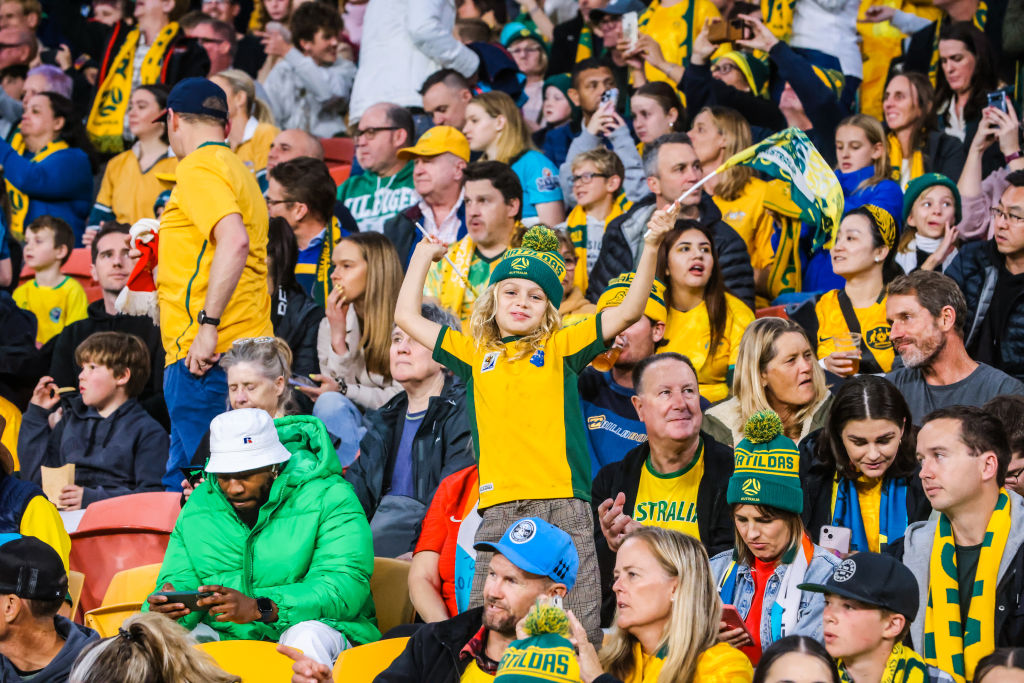For those who love sport as much as international policy, it’s a glorious moment when the two come together.
And right now, all eyes are on the FIFA Women’s World Cup in Australia and New Zealand. The world’s most played sport has descended on the region, with ticket, merchandise and viewership sales smashing all records. Boys and girls are finding new football icons – and this time, they’re women.
In homage to the tournament, last week Australia’s Foreign Minister Penny Wong brought more than 100 delegates from across the region to Brisbane to watch Australia’s Matildas compete against Nigeria’s Super Falcons, then participate in a day-long symposium on women, sport and development.
The same week, same place, AUSMIN was held. The defence and foreign affairs ministers from Australia and the United States gathered to discuss global and regional political issues, with observer expectations that the China challenge, defence industry and collaborative training would dominate the agenda.
No one expected gender equality to be in US Secretary of State Antony Blinken’s speech pack.
And yet, after the FIFA Secretary General Fatma Samoura’s rousing address, Blinken showed up, and spoke up. His appearance – a surprise to most there – demonstrated how important this Cup is for women and men across the globe. To Blinken, it is a public and poignant reminder of the unequal conditions for pay and resources – not just in sport – and of barriers to participation women face to play a sport they love.
Beyond the surging records, this World Cup is historic for what it has done for women. It is the first in which players will earn individual fees directly from FIFA. FIFA’s ambition is for women to earn the same prize pool as men by 2027. While there’s no written commitment on this, we heard the message loud and clear at the symposium from Samoura and FIFA’s Chief Women’s Football Officer, Sarai Bareman – the first female in this role.
The pay issue is significant and FIFA partners are somewhat responsible. Some broadcasters offered only one per cent of what they offer during the men’s tournament. And although the Matildas may have struck a domestic deal that gets them the same percentage cut as the Socceroos (Australia’s men’s national team), the women’s prize pool is significantly lower. It means these all-star, generation-inspiring, world-class athletes are grossly short changed.

To receive pay parity by 2027 would be a remarkable achievement. To put it into perspective, the first FIFA Women’s World Cup was held in China in 1991, 61 years after the men’s and after having played in the shadows for five decades. Starting with England, countries right across the globe banned women’s football after 53,000 people gathered to watch women play in Liverpool, England on Boxing Day in 1920. Another 10,000 were waiting outside for a chance to enter the grounds. Brazil, Germany and Spain prevented women from playing altogether. Australia refused resources and facilities. In the 1970s, England’s Football Association removed the ban, sending another wave across the globe – this time in the right direction.
But even today, not all nations allow women to play football. Afghanistan has reimposed its blanket ban on women’s sport, rendering a national women’s team in exile, watching the World Cup unfold from the sidelines. Because the Taliban won’t recognise them, FIFA can’t either, leaving this women’s team in limbo. Yet as global leaders stood by their side at the Brisbane symposium, the Afghan sportswomen stood as a powerful symbol of spirit, human rights and international collaboration.
Sport is a powerful equaliser. Beyond inspiring girls to break barriers and achieve, female athletes are less likely to drop out of school early, have better maternal health, and maintain healthier habits. But it’s not just about women. Bareman noted how football transforms lives for children with disabilities, and Samoura said matches can be the only time warring people lay down their arms or smile in times of conflict (especially when their village team is winning). Football is a universal language.
Turbocharging to close the gap of institutional neglect is the right thing to do. With only 13 female presidents out of 211 FIFA member associations, a top-down approach from feasibly the largest global sporting organisation seems necessary. But so too is targeted foreign policy to support the development of women’s sport and sporting leadership in nations nearby.
Australia has a pivotal role to play in sports diplomacy, particularly by developing infrastructure for women’s sport, providing mentorship and leadership programs, delivering messages on domestic violence and health, supporting the development of junior pathways, and building up regional sporting connections.
In the Pacific, putting on a national jersey is not only a matter of pride for women, but also a symbolic moment in often male-dominated societies. It reminds people that – in the words of Khalida Popal from the Afghan women’s team – women belong everywhere. Pacific women’s sport is a challenging space, but participating in it can lift women’s status by visibly demonstrating that women can lead too.
And as Bruce Djite – former Socceroo – explained, investing in women’s sport is not a zero-sum game resulting in less funds for men. Rather, it results in significant social dividends for mental health, domestic violence, education and poverty, notwithstanding respect for female athletes “tearing it up on the pitch” translating into respect off the pitch. And, he added, while this transformation may seem a big upheaval now, in one generation when the playing field has levelled, women and men – as well as girls and boys – won’t see what the fuss was about.
Right now, the Women’s World Cup is kicking goals for the advancement of women right across the region. As Blinken pointed out, a mega-tournament such as this will shift the mindset from “who is going to let me?” to “who is going to stop me?”
This is no more important than in the Pacific, where advancing women in sport is critical for advancing women’s status there. Given the number of high-profile Pacific women leaders in attendance at the symposium, it is clearly a view well shared. As Wong said, gender equality is integral to peace, prosperity and stability. It is in the national interest that Australia chases that goal.


